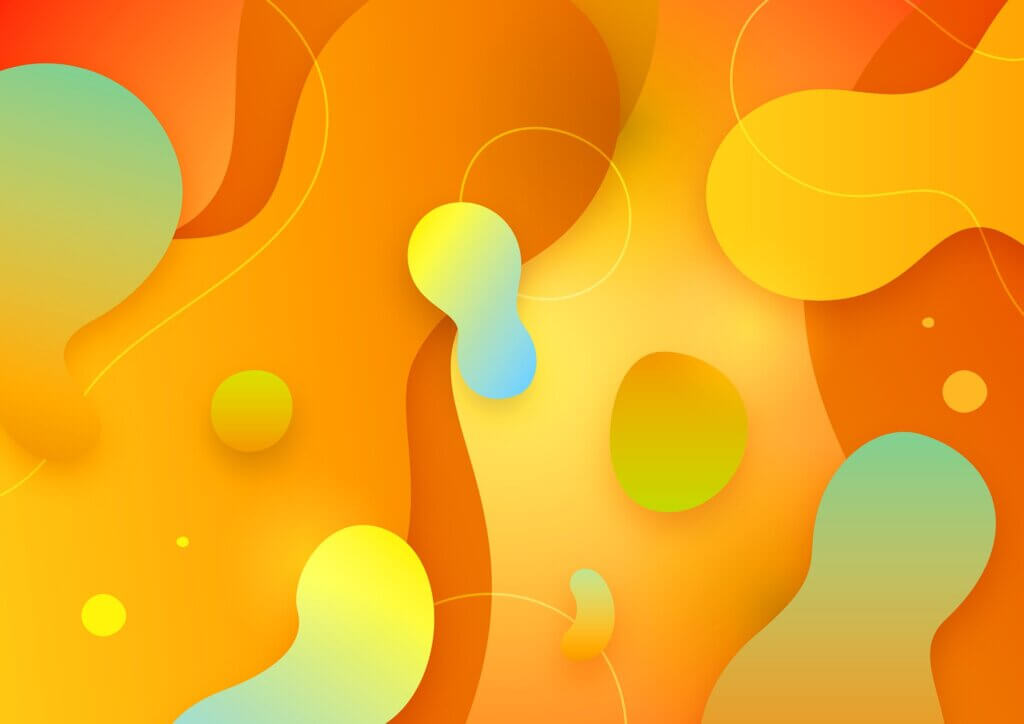Dance as a form of storytelling is one of the oldest and most universal forms of human expression.
Across cultures and eras, dance has served not only as entertainment but as a vital means of communicating stories, emotions, spiritual beliefs, and social values.
Unlike verbal language, dance uses the body as its instrument, relying on movement, rhythm, and gesture to convey meaning.
Through choreography, dancers embody characters, depict events, and express themes ranging from love and struggle to celebration and mourning.
ORIGINS AND HISTORICAL BACKGROUND:
The roots of dance storytelling can be traced back to prehistoric times. Cave paintings in India and Spain, dating back thousands of years, depict figures in motion—evidence that early humans used dance in ritualistic and communal contexts.
Ancient civilizations such as Egypt, India, China, and Greece incorporated dance into religious ceremonies, myths, and theatrical performances.
In ancient India, dance was deeply interwoven with spirituality. Classical Indian dance forms like Bharatanatyam and Kathak evolved as expressions of religious stories drawn from Hindu epics such as the Ramayana and Mahabharata.
These dances used intricate hand gestures (mudras), facial expressions (abhinaya), and symbolic movements to narrate divine tales.
In Greece, dance was part of dramatic performance and was used in tragedies and comedies to enhance the narrative. The chorus would often dance and chant, contributing to the unfolding of the plot and the emotional texture of the story.
In African traditions, dance was and continues to be an essential storytelling device within community rituals and oral histories. Movements often mimic nature, animals, or historical events, preserving cultural memory through generational transmission.
Ballet, emerging in the Renaissance courts of Italy and France, developed into a refined storytelling medium in the 17th and 18th centuries. Through elaborate choreography and music, ballets like “Swan Lake” and “Giselle” conveyed complex romantic and dramatic tales without the need for spoken words.
In the 20th century, modern dance and contemporary styles expanded the possibilities of storytelling in dance, often addressing abstract themes, personal narratives, and social issues. Choreographers like Martha Graham and Alvin Ailey used dance to explore identity, trauma, liberation, and resistance.
WHY PEOPLE ENJOY IT
People enjoy dance as storytelling for several reasons. First, it is a visceral, embodied art form—audiences often respond emotionally and instinctively to movement.
Dance transcends language barriers, allowing viewers from different linguistic backgrounds to understand and feel the story being told.
Second, dance combines multiple art forms—music, costume, lighting, and stagecraft—which together create an immersive experience. This sensory richness enhances the storytelling and draws viewers into the world of the performance.
Third, dance offers a sense of connection. Whether it’s a folk dance passed down through generations or a modern piece addressing contemporary themes, storytelling through dance fosters cultural identity and shared human experiences. It allows both performers and audiences to explore and express what is often difficult to articulate in words.
Finally, the physicality of dance is inherently captivating. Watching dancers transform their bodies into instruments of expression—leaping, turning, flowing—adds a dynamic intensity that resonates deeply.
The beauty, discipline, and emotional power of dance storytelling continue to captivate audiences around the world.
Nearly every culture in the world incorporates dance as a form of storytelling.
THE DIFFERENCE BETWEEN DANCE AS STORYTELLING AND REGULAR DANCING LIES PRIMARILY IN INTENT, STRUCTURE, AND COMMUNICATIVE PURPOSE. HERE’S A BREAKDOWN OF THE DISTINCTIONS:
Purpose and Intent
Storytelling Dance: The primary goal is to convey a narrative, message, or theme. This could be a myth, a historical event, a personal journey, or a spiritual teaching. Every movement is intentional and symbolic, contributing to the unfolding of the story.
Regular Dance: Often created for expression, celebration, recreation, or social interaction. While it may still be emotionally powerful, it isn’t necessarily trying to “tell a story.” Its purpose may be purely rhythmic, energetic, or aesthetic.
Use of Symbolism and Expression
Storytelling Dance: Heavily symbolic. Movements, gestures, facial expressions, and formations are deliberately chosen to represent characters, events, emotions, or ideas. In many traditional forms (such as Bharatanatyam or Japanese Noh dance), each gesture has a defined meaning.
Regular Dance: Symbolism may be less structured or even absent. Movement may be more about rhythm, style, or mood than about communicating a specific narrative.
Structure and Choreography
Storytelling Dance: Choreographed with a clear narrative arc—beginning, middle, and end. It might follow a script, a myth, or a written or oral tradition. Dancers may play roles or enact scenes in sequence.
Regular Dance: May be structured but not necessarily narrative. Many dance forms (like hip-hop, ballroom, or contemporary social dancing) prioritize movement quality, partner connection, or musicality rather than storytelling.
Cultural and Theatrical Elements
Storytelling Dance: Often includes theatrical components—costumes, props, music, and stage design—that support the story. Many traditional storytelling dances are tied to rituals, ceremonies, or theatrical presentations.
Regular Dance: While it may also include costumes or stylized elements, these are usually for aesthetic impact rather than to support a story. Dance in clubs, competitions, or festivals may fall into this category.
Audience Experience
Storytelling Dance: The audience is meant to understand or feel the story being told. The experience may be emotional, reflective, or educational.
Regular Dance: The audience might enjoy the rhythm, athleticism, or beauty of the performance, but may not seek or expect a deeper narrative meaning.
Examples for Contrast:
A classical ballet like Romeo and Juliet or The Nutcracker is storytelling through dance—every movement serves the plot.
A social salsa dance at a party is regular dance—joyful, expressive, and rhythm-driven, but not necessarily narrative.
A Hopi ceremonial dance tells stories of nature, gods, and seasonal cycles—deeply tied to spiritual and cultural tradition.
A breakdance performance at a competition is often about skill, rhythm, and personal expression rather than storytelling (though some breakdancers do incorporate storytelling elements).
Dance as storytelling is more than just movement—it’s a form of communication using the body as a language. Regular dance can be meaningful, but it often prioritizes form, freedom, or feeling over narrative. Both are powerful and valued, but they serve different roles in culture and human expression.
HERE ARE SOME OF THE MOST WELL-KNOWN AND POPULAR DANCE-AS-STORYTELLING GENRES OR STYLES FROM AROUND THE WORLD. THESE HAVE STOOD THE TEST OF TIME EITHER BECAUSE OF THEIR DEEP CULTURAL SIGNIFICANCE OR WIDESPREAD GLOBAL POPULARITY:
Ballet
Origin: Italy and France (15th–17th centuries)
Key Features:
Classical form with codified movements and positions
Strong narrative structure (often fairy tales, myths, tragedies)
Highly expressive, theatrical, and emotional
Famous Examples: Swan Lake, Giselle, The Nutcracker, Romeo and Juliet
Bharatanatyam
Origin: Tamil Nadu, India (ancient Hindu temples)
Key Features:
One of the oldest classical Indian dance forms
Uses mudras (hand gestures), facial expressions, and postures to tell religious and mythological stories
Deeply spiritual and symbolic
Common Themes: Hindu deities, epics like the Ramayana and Mahabharata
Kathak
Origin: Northern India
Key Features:
Blend of storytelling and rhythmic footwork
Evolved in temples, then flourished in Mughal courts
Tells stories through a combination of mime, facial expressions, and spins
Themes: Mythological and romantic tales
Chinese Classical Dance (including Beijing Opera Dance)
Origin: Ancient Chinese dynasties
Key Features:
Combines dance, martial arts, and acrobatics
Deeply expressive with symbolic gestures and costumes
Often part of opera performances narrating historical or literary tales
Famous Forms: Shen Yun performances, Peking Opera dances
Kabuki Dance (Japan)
Origin: 17th-century Japan
Key Features:
Part of Kabuki theater, which uses dance and music
Highly stylized gestures and elaborate makeup
Tells dramatic, historical, or moral stories
Audience Draw: Visual richness, tradition, and dramatic effect
Hula
Origin: Hawaii
Key Features:
Storytelling through hands, hips, and chants (mele)
Preserves history, nature, legends, and genealogy
Deep spiritual and cultural meaning
Types: Hula Kahiko (ancient) and Hula ʻAuana (modern)
African Ritual and Tribal Dances
Origin: Various African tribes and cultures
Key Features:
Tells stories of ancestry, nature, rites of passage, and tribal history
Often communal, with drumming, chanting, and call-and-response
Movement often mimics animals, the environment, or spirits
Significance: Oral tradition preserved through movement
Flamenco
Origin: Andalusia, Spain
Key Features:
Intense emotional expression (known as duende)
Foot-stamping (zapateado), hand claps, and arm gestures
Can tell stories of love, struggle, joy, and sorrow
Cultural Roots: Gypsy, Moorish, Jewish, and Andalusian influences
Contemporary Dance
Origin: 20th-century Western dance
Key Features:
Freer, more abstract form often used to explore personal or social themes
Narrative is often emotional or conceptual rather than literal
Merges elements of modern, ballet, and theatrical styles
Famous Choreographers: Martha Graham, Alvin Ailey, Pina Bausch
Indigenous and First Nations Dances (varied regions)
Examples:
Native American powwow dances
Australian Aboriginal Dreamtime dances
Key Features:
Often ceremonial and sacred
Convey creation stories, ancestral spirits, and natural cycles
Involve costumes, body paint, and music for full storytelling impact
These dance styles are not only popular in their regions of origin but have also gained global recognition. They endure because they tap into something universal: the human desire to tell stories, preserve cultural memory, and communicate without words through the powerful language of movement.
HERE ARE SOME ADDITIONAL KEY INSIGHTS AND LESSER-DISCUSSED ASPECTS OF DANCE AS STORYTELLING THAT DEEPEN YOUR UNDERSTANDING OF ITS RICHNESS AND IMPACT:
Dance as a Preserver of Oral Traditions
In many cultures, especially where literacy was not widespread, dance served as a living archive of history, lineage, myths, and laws. The steps, sequences, and gestures acted as mnemonic devices—each performance preserved and transmitted knowledge across generations.
The Role of Music and Rhythm
Storytelling in dance is inseparable from music. The tempo, rhythm, and mood of the accompanying music often mirror or enhance the emotional tone of the story. In some traditions (like West African or Indian dance), the drumbeat or melody isn’t just background—it directs the movement and narrative arc.
Costume, Makeup, and Visual Language
Costumes, face paint, masks, and props are often coded with meaning in storytelling dances. A change in color, shape, or accessory can indicate a shift in character, time, or emotion. For example:
In Kathakali (India), green makeup represents heroism, red implies evil or violence.
In Balinese dance, a headdress or scarf may symbolize a shift in divine or demonic power.
Nonlinear and Symbolic Narratives
Not all storytelling dances follow a Western, linear “beginning–middle–end” structure. Many are cyclical, symbolic, or even impressionistic. They evoke feelings, ideas, or archetypes more than specific plot points, especially in spiritual or ceremonial contexts.
Audience Understanding Varies by Culture
In some traditions, the storytelling elements are understood only by insiders familiar with the symbols and context. Outsiders may appreciate the form but not grasp the full meaning without background knowledge. This makes dance a cultural gatekeeper as well as a bridge.
Dance as Resistance and Liberation
In many societies, dance storytelling has been used as a form of resistance, identity preservation, or social commentary:
Enslaved Africans in the Americas used dance to retain elements of their culture under oppressive conditions.
Contemporary choreographers use dance to tell stories about social justice, racial identity, gender roles, and historical trauma.
Cross-Cultural Fusion and Evolution
Modern global connectivity has led to fusion genres where traditional storytelling dance merges with contemporary or popular styles. This has produced new forms that retain narrative depth while engaging broader audiences (e.g., hip-hop-infused narrative ballet, or classical Indian fusion in modern theater).
Psychological and Emotional Impact
Watching or performing a storytelling dance can have profound emotional effects. Because it bypasses spoken language and taps into nonverbal communication, it often resonates subconsciously. This is why audiences can feel moved even if they don’t fully “understand” what’s being portrayed.
Dance in Film and Digital Media
With the rise of cinema and digital platforms, dance storytelling has found new life beyond live performance. Choreographed scenes in movies, music videos, or viral online content can tell compelling stories without a single word, expanding the audience and potential for influence.
Role in Identity and Belonging
For many performers and communities, storytelling through dance is not just performance—it’s an expression of who they are, where they come from, and how they connect to their ancestors and land. It’s often a form of healing, bonding, and cultural renewal.
Dance as storytelling is a deeply layered, ever-evolving form that speaks to our need for connection, memory, and meaning. Whether sacred or secular, traditional or modern, it offers a universal language that continues to move hearts and shape cultures.
Dance as storytelling is one of the most powerful, timeless ways that humans communicate meaning beyond words. It weaves movement, music, and emotion into a language that transcends cultures and borders.
Through carefully choreographed gestures, facial expressions, and rhythms, dancers bring to life the myths, struggles, victories, and values of people from around the world. Whether ancient or modern, sacred, or theatrical, these performances are not just beautiful to watch—they are full of depth, history, and soul.
Watching dance as storytelling opens a window into other worlds. You may witness a tale passed down for generations, a cultural identity preserved through movement, or a deeply personal narrative shared by a contemporary choreographer.
Each performance invites you to feel more than understand—to respond emotionally, instinctively, and imaginatively. It allows you to appreciate not just the art form itself, but also the culture, spirit, and humanity behind it.
You might want to check out storytelling through dance because it offers something more than entertainment—it offers meaning. It can inspire, educate, move, and even challenge you.
Whether you experience it in a theater, on a cultural stage, at a festival, or through a screen, dance reminds us that the body can speak powerfully, even when words fall short. If you’re curious about new perspectives, artistic expression, or simply being drawn into a story told in the most human way possible, dance as storytelling is well worth your time.
TO EXPLORE MORE ABOUT DANCE AS STORYTELLING, ITS HISTORY, STYLES, AND CULTURAL SIGNIFICANCE, HERE ARE SOME VALUABLE AND RELIABLE SOURCES ACROSS VARIOUS FORMATS:
Books and Academic Resources
- “Dance as a Theatre Art” by Selma Jeanne Cohen
A foundational text exploring the evolution of dance as a performing and storytelling art. - “The Illustrated History of Dance” by Judith Mackrell
Covers global dance traditions and includes storytelling elements from different cultures. - “World Dance Cultures: From Ritual to Spectacle” by Patricia Leigh Beaman
An in-depth look at traditional and theatrical dances across the world with a focus on narrative and cultural significance. - JSTOR.org or Google Scholar
Search for academic papers using terms like dance as storytelling, narrative in dance, cultural dance traditions, or dance and ritual.
Museums and Cultural Institutions
- The Library of Congress – Performing Arts Encyclopedia
https://www.loc.gov/performingarts/
Offers articles, historical documents, and videos related to various dance forms. - The Smithsonian Center for Folklife and Cultural Heritage
https://folklife.si.edu/
Features storytelling dance traditions from cultures around the globe. - Jacob’s Pillow Dance Interactive
https://danceinteractive.jacobspillow.org/
A video archive of iconic dance performances, including storytelling forms.
Websites and Online Articles
- Dance Magazine
https://www.dancemagazine.com
Covers both classical and contemporary dance storytelling performances and interviews with choreographers. - BBC Arts or National Geographic Culture Sections
Occasionally publish features on cultural dance traditions and storytelling performances around the world. - YouTube and Vimeo
Search for performances from companies like Alvin Ailey American Dance Theater, Martha Graham Dance Company, Shen Yun, or traditional dances like Hula, Bharatanatyam, and Kathak with narrative subtitles or explanations.
Places to Watch or Experience Storytelling Dance
- Local performing arts centers, universities, or cultural festivals
- National theaters or dance companies’ websites and streaming platforms
- PBS Great Performances often features high-quality recordings of ballets and modern dance performances
By exploring these resources, you can gain a deeper understanding of how dance tells stories, preserves culture, and expresses the human experience in profound and captivating ways.


















